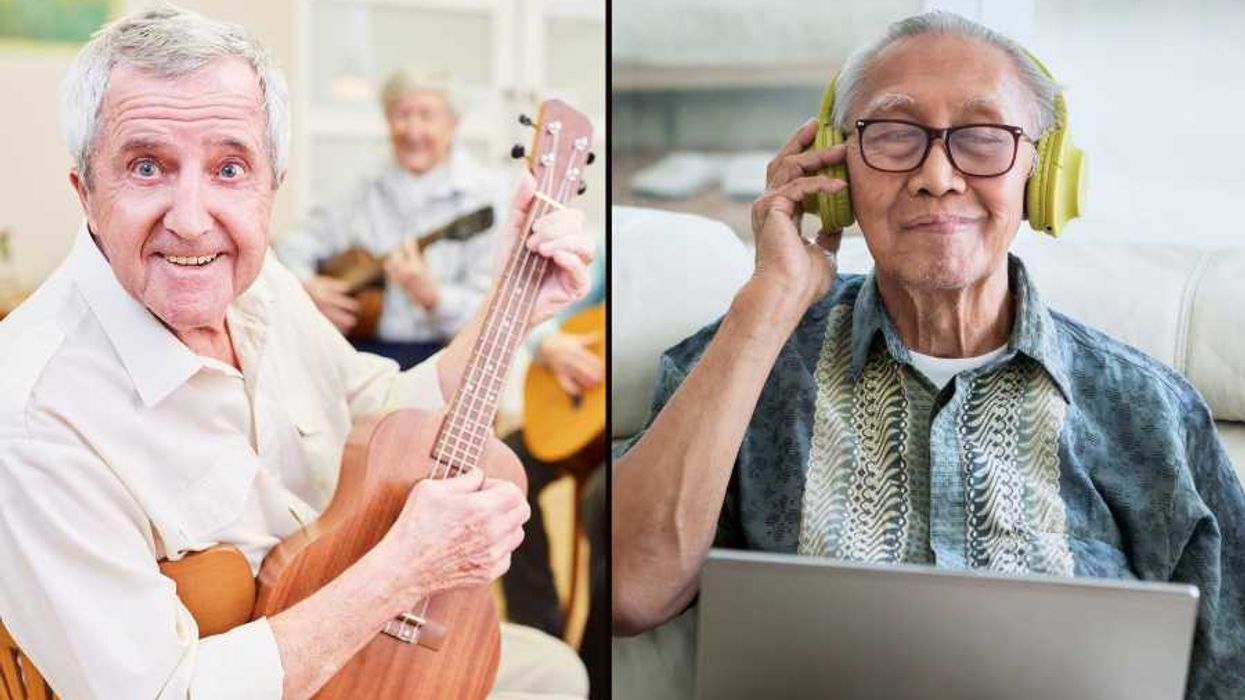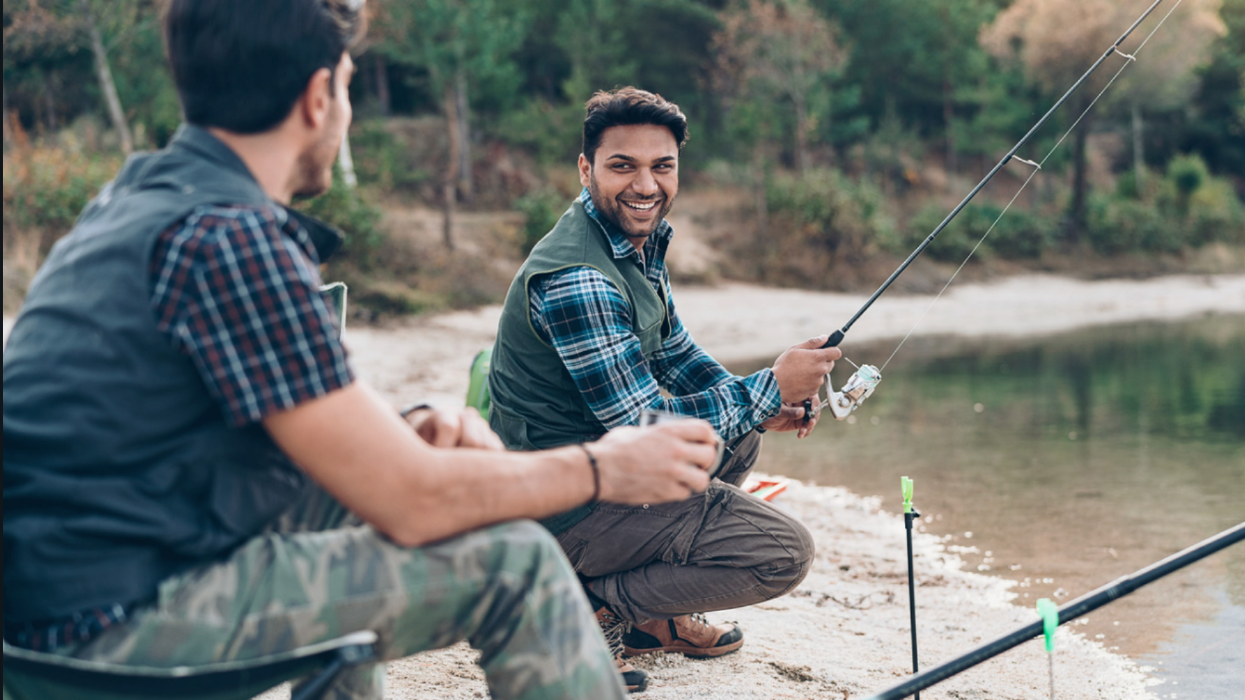In a matter of days, we went from seeing no one wearing a mask and gloves in public to just about everyone wearing a mask and gloves in public. The goal of wearing personal protective equipment, is to prevent transmitting or acquiring COVID-19.
However, when this equipment isn't used properly it can be more dangerous than not wearing any at all.
If you've been told to use gloves by an employer or you feel they are best for your personal protection, it's very important to take the proper safety precautions.
Jacquelyn Gill, a paleoecologist and Associate Professor of climate science at the University of Maine, is used to wearing gloves when she does field work. As an ICE Age ecologist, she has to be careful not to contaminate ancient specimens she comes across in the frozen tundra.
So to inform the public on the safe way to wear gloves, she took to Twitter.
If all of her wisdom is news to you, don't feel bad, most people aren't professionally trained to wear gloves.
Based on what I'm seeing in my weekly grocery trip, people need a primer on how to use disposable gloves properly. As a scientist who wears gloves to protect me from lethal chemicals (abd to avoid contaminating ice age specimens), let me share some tips:
— Dr. Jacquelyn Gill (@JacquelynGill) April 5, 2020
One of the most important things to remember: the point of gloves is not to not prevent you from “absorbing" the virus through your skin. If your skin is hydrated and you don't have open wounds, your body's natural defenses will prevent transmission through your skin.
— Dr. Jacquelyn Gill (@JacquelynGill) April 5, 2020
(With all the handwashing, your hands may be cracked and dry: keep them hydrated with heavy duty hand creams!)
— Dr. Jacquelyn Gill (@JacquelynGill) April 5, 2020
The big benefit to wearing gloves is that they're disposable.
So why wear gloves? They're disposable! If you touch a surface lots of other people touched, like a pin pad at a checkout counter or a door handle, you can throw them away and avoid transmitting any germs (like coronavirus) to your phone, face, car door, debit card, keys, etc.
— Dr. Jacquelyn Gill (@JacquelynGill) April 5, 2020
Gloves will not prevent you from transferring germs from a contaminated surface to an I contaminated one! They aren't anti-microbial. If you touch a doorknob with gloves on, then touch your face WITH THOSE SAME GLOVES, you've transmitted germs from the doorknob to your face.
— Dr. Jacquelyn Gill (@JacquelynGill) April 5, 2020
You can easily transmit the virus while wearing gloves.
Things I saw people doing while wearing gloves:
- opening a soda bottle and taking a drink
- touching their glasses
- adjusting their masks
- touching their car keys, debit card
- using their phone
*All while shopping in a store and handling groceries, their carts, etc.*
— Dr. Jacquelyn Gill (@JacquelynGill) April 5, 2020
Even though you're wearing gloves, you still have to wash your hands.
The only way gloves are effective is if you change them as often as you should wash or sanitize* your hands.
Read that out loud. Again. Make it stick.
*Good hand-washing with soap is more effective than sanitizer, but it's not always something we can do outside the house.
— Dr. Jacquelyn Gill (@JacquelynGill) April 5, 2020
If you have gloves on, and you've touched something, treat your hands as if they were contaminated. Period. Treat the gloves as an extra layer of skin that you can shed BEFORE you touch your face, your car door, or any surface you don't want to contaminate.
— Dr. Jacquelyn Gill (@JacquelynGill) April 5, 2020
“But doesn't that mean you have to change your gloves a lot?"
Yep!
It also means you can get by without them if you're washing your hands and paying attention to what you touch. Or save them for things like the gas pump or other single uses where you can't wash your hands.
— Dr. Jacquelyn Gill (@JacquelynGill) April 5, 2020
You should not re-use gloves.
Gloves start to lose effectiveness with use, and not all gloves are the same (there are many kinds!) so look up how long you can safely wear yours.
Learn how to safely remove them! https://t.co/GQC0bT21v2
— Dr. Jacquelyn Gill (@JacquelynGill) April 5, 2020
If it rips, it's time to replace.
Many research-grade gloves are designed to tear if they have a defect, so if you put them on and they rip, that's good! It means there was a tiny hole or a weak spot. Just get another one.
— Dr. Jacquelyn Gill (@JacquelynGill) April 5, 2020
Be careful if you're thinking about sanitizing your gloves. You may be reducing their effectiveness, depending on the chemicals used. There are lots of charts online that tell you what your specific type of gloves will be effective against.
— Dr. Jacquelyn Gill (@JacquelynGill) April 5, 2020
And finally, please safely dispose of your used gloves in the trash. Bag them up in your car if you can't find an outdoor garbage can. Don't throw them on the ground for someone else to pick up, or where they could potentially harm wildlife.
— Dr. Jacquelyn Gill (@JacquelynGill) April 5, 2020
Don't wash and re-use your gloves.
A lot of folks are asking about washing and re-using disposable gloves:
Think of them like condoms, folks. Single-use and disposable. That's what they were designed for. They start to wear out and and fail rates increase within 15-30 minutes. That's why hospitals need so many.
— Dr. Jacquelyn Gill (@JacquelynGill) April 5, 2020
This seems obvious, but ...
I can't believe I need to add this, but: don't remove your gloves with your teeth. Ever. Under any circumstances. Even if we aren't in a pandemic. Even if you just chopped up some jalapeños. If you didn't want it on your hands, you don't want in your mouth.
— Dr. Jacquelyn Gill (@JacquelynGill) April 5, 2020
PS It's okay if you didn't know some or all of this. Disposable gloves are something most of us don't use on a daily basis. We're all having to learn new things to get through this. Take care of one another, stay strong, stay healthy.
— Dr. Jacquelyn Gill (@JacquelynGill) April 5, 2020
Gill's tweet thread discusses the importance of removing gloves safely to prevent the spread of disease. Here's the Centers for Disease Controls tips on how to do so properly.
A seven-step guide from the CDC outlines how to properly remove gloves to avoid unintentional germ transmission.- Grasp the outside of one glove at the wrist. Do not touch your bare skin.
- Peel the glove away from your body, pulling it inside out.
- Hold the glove you just removed in your gloved hand.
- Peel off the second glove by putting your fingers inside the glove at the bottom of your wrist.
- Turn the second glove inside out while pulling it away from your body, leaving the first glove inside the second.
- Dispose of the gloves safely. Do not reuse the gloves.
- Clean your hand immediately after removing gloves.


















 Ladder leads out of darkness.Photo credit
Ladder leads out of darkness.Photo credit  Woman's reflection in shadow.Photo credit
Woman's reflection in shadow.Photo credit  Young woman frazzled.Photo credit
Young woman frazzled.Photo credit 



Will your current friends still be with you after seven years?
Professor shares how many years a friendship must last before it'll become lifelong
Think of your best friend. How long have you known them? Growing up, children make friends and say they’ll be best friends forever. That’s where “BFF” came from, for crying out loud. But is the concept of the lifelong friend real? If so, how many years of friendship will have to bloom before a friendship goes the distance? Well, a Dutch study may have the answer to that last question.
Sociologist Gerald Mollenhorst and his team in the Netherlands did extensive research on friendships and made some interesting findings in his surveys and studies. Mollenhorst found that over half of your friendships will “shed” within seven years. However, the relationships that go past the seven-year mark tend to last. This led to the prevailing theory that most friendships lasting more than seven years would endure throughout a person’s lifetime.
In Mollenhorst’s findings, lifelong friendships seem to come down to one thing: reciprocal effort. The primary reason so many friendships form and fade within seven-year cycles has much to do with a person’s ages and life stages. A lot of people lose touch with elementary and high school friends because so many leave home to attend college. Work friends change when someone gets promoted or finds a better job in a different state. Some friends get married and have children, reducing one-on-one time together, and thus a friendship fades. It’s easy to lose friends, but naturally harder to keep them when you’re no longer in proximity.
Some people on Reddit even wonder if lifelong friendships are actually real or just a romanticized thought nowadays. However, older commenters showed that lifelong friendship is still possible:
“I met my friend on the first day of kindergarten. Maybe not the very first day, but within the first week. We were texting each other stupid memes just yesterday. This year we’ll both celebrate our 58th birthdays.”
“My oldest friend and I met when she was just 5 and I was 9. Next-door neighbors. We're now both over 60 and still talk weekly and visit at least twice a year.”
“I’m 55. I’ve just spent a weekend with friends I met 24 and 32 years ago respectively. I’m also still in touch with my penpal in the States. I was 15 when we started writing to each other.”
“My friends (3 of them) go back to my college days in my 20’s that I still talk to a minimum of once a week. I'm in my early 60s now.”
“We ebb and flow. Sometimes many years will pass as we go through different things and phases. Nobody gets buttsore if we aren’t in touch all the time. In our 50s we don’t try and argue or be petty like we did before. But I love them. I don’t need a weekly lunch to know that. I could make a call right now if I needed something. Same with them.”
Maintaining a friendship for life is never guaranteed, but there are ways, psychotherapists say, that can make a friendship last. It’s not easy, but for a friendship to last, both participants need to make room for patience and place greater weight on their similarities than on the differences that may develop over time. Along with that, it’s helpful to be tolerant of large distances and gaps of time between visits, too. It’s not easy, and it requires both people involved to be equally invested to keep the friendship alive and from becoming stagnant.
As tough as it sounds, it is still possible. You may be a fortunate person who can name several friends you’ve kept for over seven years or over seventy years. But if you’re not, every new friendship you make has the same chance and potential of being lifelong.